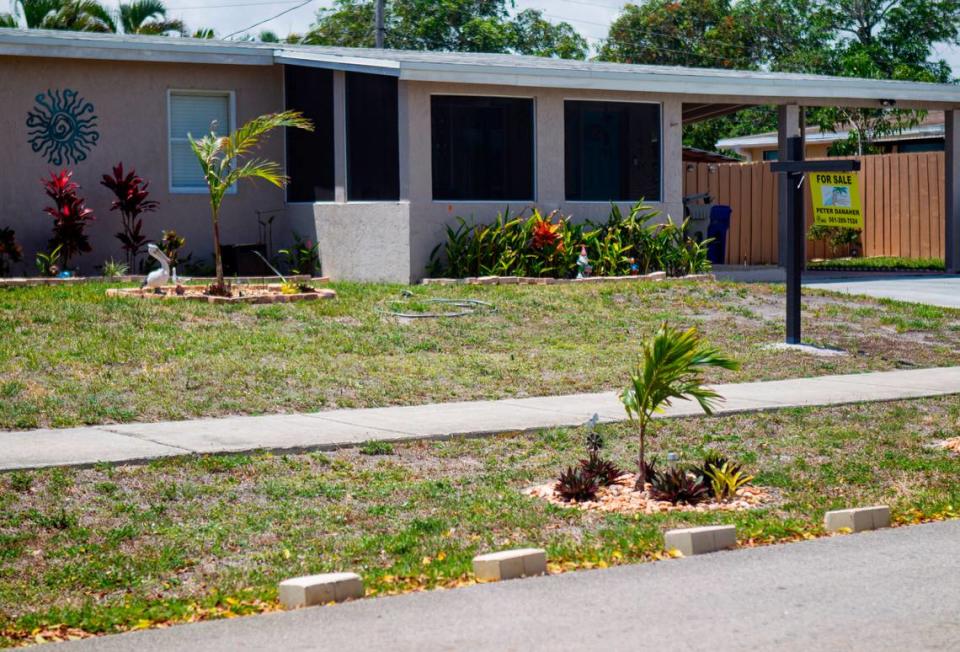This simple thing might be the top reason your for-sale home gets buyers’ attention

Turns out the Five Man Electrical Band was wrong when they sang, “Sign, sign, everywhere a sign” — signs aren’t everywhere. Not “For Sale” signs, at least.
Some years back, Baltimore broker Margaret Rome picked up a listing for a vacant house that had been on the market for more than a year. “It was on a high-traffic street adjacent to a church,” she recalled on the ActiveRain real estate site. But there was no sign out front because the seller didn’t want one.
The previous agent had been OK with that, but not Rome. “When I took the listing, they only had a choice of where to place the sign,” she said. Within minutes of the sign going up, calls started coming in about the property. Some inquired about renting it, and others couldn’t afford the asking price.
“But then there was a call from the head of the adjoining church,” Rome said. “They had been praying about purchasing the property but did not know how to contact the owner.” Within days, the church and Rome’s client had a contract. The moral: “That property needed the sign!”
Some sellers have a good reason for not wanting one. But for most people, “For Sale” signs are a 24-hour marketing tool that shouldn’t be ignored. According to a buyer-seller profile from the National Association of Realtors, a whopping 35% of buyers in 2021 used yard signs to find their homes. And while most buyers now start their house hunts online, a third of buyers still say they find yard signs useful.
After finding a home they like online, 5% drive through the neighborhood — perhaps looking for other nearby places with signs out front. That’s why Michael Jacobs, a Pasadena, California, agent, calls signs the “silent salesperson.”
Sacramento agent Myrl Jeffcoat of GreatWest Realty wouldn’t have purchased her own place had it not been for the sign in the front yard. “I wasn’t really in the market. However, I happened to drive by this house ... and fell in love with it,” Jeffcoat said. “Had there been no sign, I wouldn’t have even known it was on the market.”
There are situations when a sign is unnecessary. You may not want your neighbors to know you’re selling, for example. And Rome, the Maryland agent, once took on a house that had been listed for four years with four different agents — signs out front all the while. Her suggestion: Trash the sign and try something different, such as an invitation-only event. Even if the invited guests aren’t interested, they might know someone who is.
“Why continue to do the same thing over and over again and expect different results?” she said. “Isn’t that the definition of insanity?”
Still, for most agents, a sign is a key marketing tool. It can feel very limiting to have the option taken off the table.
Margaret Goss of Baird and Warner Real Estate in Winnetka, Illinois, once listed a house across from an elementary school, but the seller “absolutely refused to have a sign.” Goss felt like her hands were tied behind her back. “With all the activity (going on) at the school,” she said, “no one knew the house was available!”
Said Sheila Anderson of the Referral Group in East Brunswick, New Jersey: “Playing ‘I’ve got a secret’ with selling never made any sense.”
That said, sellers who live in communities governed by homeowners’ associations must abide by their rules. Those rules can be daunting at best — and potentially illegal at worst. Association leaders tend to dislike “For Sale” signs because they believe signs make the neighborhood look undesirable, especially when several owners are selling at the same time. So some HOAs dictate the size and color of signs that can be used, as well as when and where they can be displayed.
Some HOAs go even further and won’t allow agents to use their own signs at all; instead, they design their own and sell them, sometimes at inflated prices, to homeowners or their agents. This may seem like a small matter, but it adds up: According to WMBF-NBC, agent Rod Smith of Chicora Advantage in Myrtle Beach, South Carolina, has had to purchase more than 170 custom signs — one for each of the HOAs in his area.
If your neighborhood has an HOA, check out its regulations on the matter. If you find them too cumbersome, try to determine if they are even legal. Under California law, for example, an association can limit the number of signs and their dimensions, and it can also forbid signs from being displayed in common areas. But it can’t stop you from putting one in your window, on your property or even on someone else’s property — as long as you have that owner’s permission.
Lew Sichelman has been covering real estate for more than 50 years. He is a regular contributor to numerous shelter magazines and housing and housing-finance industry publications. Readers can contact him at lsichelman@aol.com.

 Yahoo Finance
Yahoo Finance 